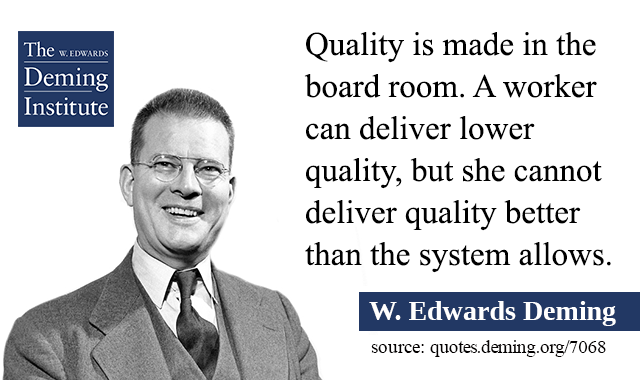To actually improve management you need to engage in continual improvement of your management systems. This requires doing the hard work of challenging complacency. The job of those improving the practice of management is not to make everyone happy and just ignore that the words about improvement are not actually carrying through to changes in behavior.
Do Executives “Get It?”
So many times executives spout the importance of new initiatives like wellness programs, safety programs, or improvement projects like Lean, Six Sigma, etc. They talk about how great they are and how everyone should embrace them so the company can improve, but when push comes to shove, their actions indicate they really don’t believe in them.
If you are trying to bring about change you need in-process indications of actual success at improving the management system. Instead it seems to me, most of the time, the focus is on spinning what is being done to convince others that what is being done is good. This is not helpful and not useful.
Without in-process indications of how the movement to a better management system is performing the pattern is all too common. People want to show they are doing a good job (which often includes not being too negative – because if they criticize results they can be branded as negative). So instead we end up with actions that would be used if one assumed that while we had problems with the last 4 management fads we implemented, now we have this wonderful new idea it will avoid all the problems.
So we start our new process, and write up reports and presentations for meetings talking about our successes. We are careful to ignore any warning signs. Then, after 1, 2… years (in a good economy this can last quite a bit longer), the boss says the results are not improving, this isn’t working. Everyone quickly agrees and the improvement effort is dropped. Usually there will be a period of time taken until and a new fad is found that everyone agrees is wonderful for 2-5 years until they then all agree was a failure. Repeat for the rest of your career.
To break this cycle and actually continually improve we can’t go along with the in-process indications that the management improvement system is not really working. We need to seek out indications that it is not working and address those issues and build a strong continually improving management system.
Related: Management Advice Failures – flavors of management improvement efforts – manage what you can’t measure – Federal Government Chief Performance Officer (a specific example of the repeated failure to improve), just pretending the failures in the past didn’t exist doesn’t help the current effort




Engage in Improving the Management System
To actually improve management you need to engage in continual improvement of your management systems. This requires doing the hard work of challenging complacency. The job of those improving the practice of management is not to make everyone happy and just ignore that the words about improvement are not actually carrying through to changes in behavior.
Do Executives “Get It?”
If you are trying to bring about change you need in-process indications of actual success at improving the management system. Instead it seems to me, most of the time, the focus is on spinning what is being done to convince others that what is being done is good. This is not helpful and not useful.
Without in-process indications of how the movement to a better management system is performing the pattern is all too common. People want to show they are doing a good job (which often includes not being too negative – because if they criticize results they can be branded as negative). So instead we end up with actions that would be used if one assumed that while we had problems with the last 4 management fads we implemented, now we have this wonderful new idea it will avoid all the problems.
So we start our new process, and write up reports and presentations for meetings talking about our successes. We are careful to ignore any warning signs. Then, after 1, 2… years (in a good economy this can last quite a bit longer), the boss says the results are not improving, this isn’t working. Everyone quickly agrees and the improvement effort is dropped. Usually there will be a period of time taken until and a new fad is found that everyone agrees is wonderful for 2-5 years until they then all agree was a failure. Repeat for the rest of your career.
To break this cycle and actually continually improve we can’t go along with the in-process indications that the management improvement system is not really working. We need to seek out indications that it is not working and address those issues and build a strong continually improving management system.
Related: Management Advice Failures – flavors of management improvement efforts – manage what you can’t measure – Federal Government Chief Performance Officer (a specific example of the repeated failure to improve), just pretending the failures in the past didn’t exist doesn’t help the current effort